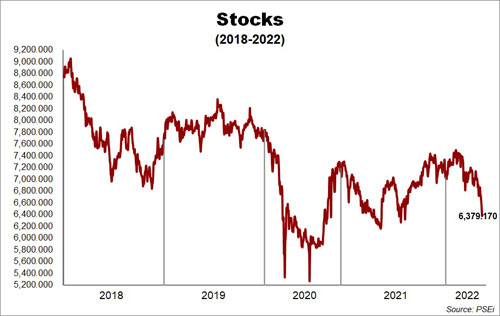The Department of Energy (DOE) believes the temporary elimination of tariffs – which the Department of Trade and Industry recommends at five years – would hasten the attainment of the country’s goals under the Philippine Energy Plan (PEP) where an additional 3.3 million EVs will be on the road by 2040, about 18 years from today.
In his presentation at the Tariff Commission hearing last week, DOE director Patrick Aquino said under the PEP’s Clean Energy Scenario, that projection would be equivalent to a 10- percent share of total vehicles, of which 2.2 million are e-motorcycles.
Those numbers dwarf the number of e-vehicles registered between 2010 and 2020 at 12,965 units. Of that number, 7,100 are e-trikes; 4,845, e-motorycles; 722, utility vehicles/sport utility vehicles; 276, e-cars;12 e-trucks and; 10- buses .
“The tariff elimination will reduce the dependence on imported fuel for the transportation sector and will support the transition to emerging technologies that will spur the market, generate jobs, and be globally competitive. This will encourage end-users to shift to EVs and aide on increasing the number of EVs in the current vehicle fleet of the country,” Aquino said.
An executive order for the tariff elimination is eyed for issuance before end of June.
Deadline for the submission of position papers is today, May 16.
The TC said as of February 2022, there were 13 models of battery EVs (BEVs), 22 models of hybrid EVs (HEVs) and 6 models of plug-in hybrid EVs (PHEVs) available in the country.
Citing available data, the TC said prices of EVs ranged from P1.6 million to P9.49 million.
The cheapest BEV is P1.83 million and the most expensive, P7.59 million. For HEVs, the cheapest is at P1.6 million and the most expensive, P 9.46 million. For PHEVs, the cheapest is P2.99 million and the most expensive P9.49 million.
Prices of electric buses ranged from P 3.7 million to P15.8 million per unit.
Prices of light EVs such as e-kick scooter and e-bike ranged from P7,000 to P48,000 per unit while of e-scooters ranged from P 20,000 to P110,000 per unit.
E-motorcycles and e-go karts range from P33,000 to P125,000 per unit.
Imports of completely built up (CBU) EVs classified under subheading 87.02 (motor vehicles for the transport of 10 or more persons, including the driver e.g., e-bus and e-jeep) increased from 12 units (in 2019) to 34 units (in 2021).
The commission added imported CBU EVs classified under subheading 87.03 (motor cars or motor vehicles principally designed for the transport of persons e.g., e- cars) increased at an average rate of 110 percent from 209 units in 2019 to 860 units in 2021.
Imports of CBU EVs under subheading 87.11 (motorcycles (including mopeds) and cycles fitted with an auxiliary motor, with or without side-cars e.g., e-motorcycle, e-bike) increased by 22 percent in 2020 to 47,714 units (during the pandemic) but then declined by 93 percent to 3,306 units in 2021.
From 2019 to 2021, 74 percent of imports came from Japan, 24 percent from China, and 2 percent from other countries (e.g., Thailand, Singapore, Taiwan, United States, South Korea and Europe.
Imports of lithium-ion batteries increased sharply from 22 units in 2019 to 6,762 units in 2020, but declined by 10 percent to 6,084 units in 2021.
From 2019 to 2021, no imports were recorded for motor controllers and AC charging stations.
From 2019 to 2021, 98 percent of imported lithium-ion batteries were sourced from China, another 1 percent from Hong Kong, and the remaining 1 percent from countries such as South Korea, Japan, Taiwan, Indonesia, and Singapore.
Vince Socco, chairman of GT Capital Auto & Mobility Dealership Holdings Inc. said there are no projections as of yet on the increase in adoption of EVs once tariffs are removed, but noted the numbers have been showing a significant takeup recently.
Socco cited as an example Lexus which started with HEVs with only a 7 to 8 percent share of sales.
He said this has since jumped to 18 percent due to the growing awareness and preference for electrified vehicles. particularly HEV.
For Socco,demand will be affected not only by price but usage as well, noting the need to have a robust infrastructure to encourage people to use EVs.
He said for EV adoption has “a lot of moving parts.”
“Bottom line is – we all share the same vision of a cleaner and more sustainable environment. This is a shared goal and responsibility of three sectors: government DOEs (original equipment) and the consumer. All three have to do their part but, ultimately, the consumer gets to vote with their wallet. We cannot force consumers to choose electric; we need to give them all the reasons for them to adapt the technology,” Socco said.
He added: Electrification is the future, no doubt. But it is a journey, not a point in time. So we need to exploit all sorts of solutions to move the journey along. There cannot be a one size fits all. Even ICE (internal combustion engine) – made more fuel efficient – is part of the solution.” – Irma Isip





